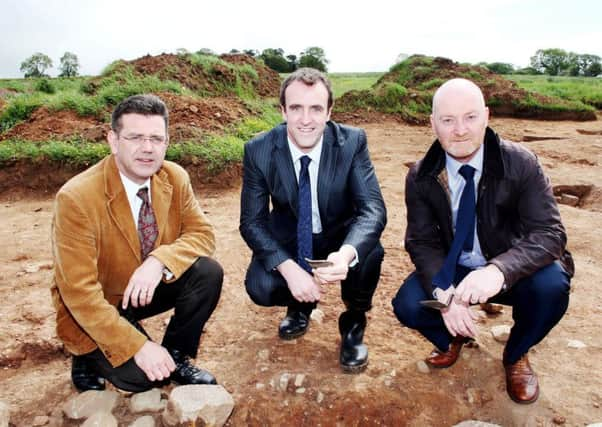House foundations dating back 700 years found at Tullaghoge Fort


Remains of the homes, thought to belong to the Gaelic O’Hagan clan, were found by the Department of the Environment (DoE) at Tullaghoge in Cookstown in Co Tyrone.
They were located outside Tullaghoge Fort during pre-development work on new visitor facilities.
Advertisement
Hide AdAdvertisement
Hide AdEnvironment Minister Mark H Durkan said: “These preliminary findings have surpassed all our expectations.
“We believe that not only is this the first time such buildings of this date have been uncovered in the North but may well be a first for the entire island of Ireland.”
The houses are small sub-rectangular buildings marked only by their surviving floors and measure around five metres by three metres internally.
They would have had sod or clay walls supporting angled roof timbers known as “crucks”.
Advertisement
Hide AdAdvertisement
Hide AdA fire, set in its hearth at the centre of the house, would have heated the building, with the smoke rising to escape through a thatched or sod roof.
Mr Durkan said at least two houses have been found and fragmentary remains of a possible two or three more.
Tullaghogue Fort artefacts date back over 7,000 yearsArchaeologists suspect many more lie dotted around the hill, forming an O’Hagan farming settlement that supported the elite members of the clan who lived in the fort or nearby on the hill.
Tullaghoge is mostly associated with the O’Neill family who were very powerful in Ulster during the medieval and late medieval periods.
Advertisement
Hide AdAdvertisement
Hide AdHowever, the O’Hagans were the hereditary guardians of Tullaghoge and lived at the site from at least the 1200s until 1602, Mr Durkan added.
“Their role as stewards of the site may well extend back to the 900s when the predecessors of the O’Neills, a Donegal dynastic group known as the Cenel nEogain, conquered this part of modern Tyrone.
“The O’Hagans trace their ancestry to the Cenel nEogain and played a role within the inauguration of kings and O’Neills at Tullaghoge for centuries.”